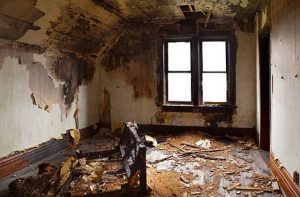There’s no doubt about it, watching your beloved home go up in flames is a traumatic experience. Our home is somewhere to rest, make memories, spend time with loved ones, shelter from the stresses of the world, and be ourselves. To watch it succumb to fire is a terrible experience, but it doesn’t mean the end of your home altogether. Now, it’s time to renovate and create that safe haven once again.

Step 1 – Assess the Damage
There are different types of fire, and some people differentiate by calling them either ‘complex’ or ‘simple’ fires. With a simple fire, the restoration project will be much easier than with a complex fire. Normally, synthetic materials fuel the latter while simple fires are fueled by pure fuels. The problem with fires fueled by synthetic materials is that it produces lots of soot, and this causes more damage.
Step 2 – Contact the Insurance Company
After assessing the damage, you might decide an insurance claim is necessary. In our experience, it’s best to open a dialogue with the insurance company as early as possible. Often, they will give advice regarding the protection of the property, taking an inventory, and the next steps.
Under normal circumstances, the insurance company will send an adjuster to inspect the home. You’re welcome to attend this inspection, and we recommend walking around with them so that you’re confident they see the full extent of the damage. This includes some key areas:
- Windows – With windows, the heat of the fire will warp the glass while blistering or even melting the frame.
- Roof – If the fire didn’t damage the roof, there could still be mold in the wood underneath the shingles.
- Interior Framing – It’s essential the insurance adjuster sees the state of the framing, and this may require some movement of the wallboard.
- Other – The adjuster should also see any cracked stucco, melted siding, and damaged ducts, piping, connectors, or soldering.
By the end of the inspection, you should be happy that the adjuster has seen all the damage. The more they see, the easier it will be to get the compensation you deserve. Otherwise, you’ll be chasing and trying to prove more damage later down the line.
Step 3 – Contact a Professional Restoration Service
Once the compensation claim is made, the next step is to plan the renovation, and this is where a specialist restoration service comes in. For example, Loss Restorations has experience with helping families recover their lifestyles after a fire. In fact, the brand also has experience with mold remediation, renovation after water damage, and storm damage. There are costs associated with a restoration that don’t occur with a normal renovation, and this is why we recommend a specialist service.
With the right service, it will secure the house, help you assess the damage, remove water (generated by attempts to douse the fire), consider soot and smoke damage, clean, and renovate. Depending on the methods used to put out a fire, the condition of a property can vary from one situation to the next. Also, the cost of renovation will be affected by the heat of the fire, the amount of soot, the extent of the damage, and the objects that need removing.
Step 4 – Enjoy (and Protect) Your New Home
After the restoration service brings your home back to life, all you need to do now is prevent the same thing from happening again. Install a sprinkler system and a smoke detector, buy an extinguisher, and remove fuel sources close to the property.
Good luck with your project!